Espresso Machines
How To Maintain Your Coffee Machines
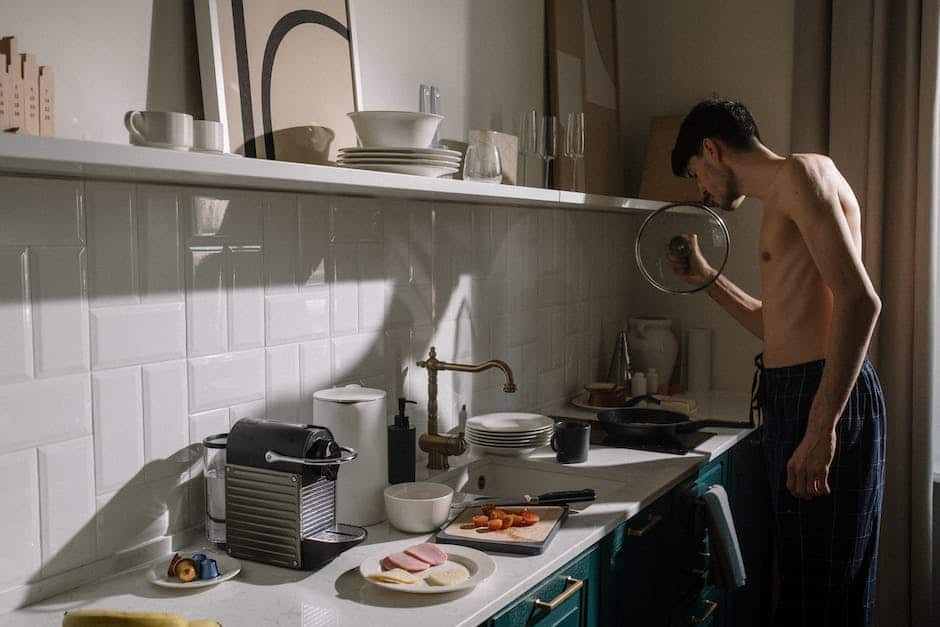
Coffee is a favorite drink of many people. Whether it is espresso, coffee, cappuccino, or latte, there are many variations of the perfect drink. People are always looking for new ways to enjoy their coffee!
Knowing how to maintain your coffee machines will ensure that you can make your favorite drinks at home. Thankfully, this is a pretty easy task that only requires a few minutes of your time every few days.
Maintenance can include cleaning the machine, replacing parts if needed, and remembering to fill up the water reservoir. Most machines have lights or alerts that tell you when you need to refill the water tank, so this part is pretty self-taking.
The most important part of maintaining a coffee machine is cleaning it. There are several ways to do this, but we will go over the basics here. First, let’s talk about cleaning the brewing unit or chamber where the coffee is made.
Clean out The Grinds
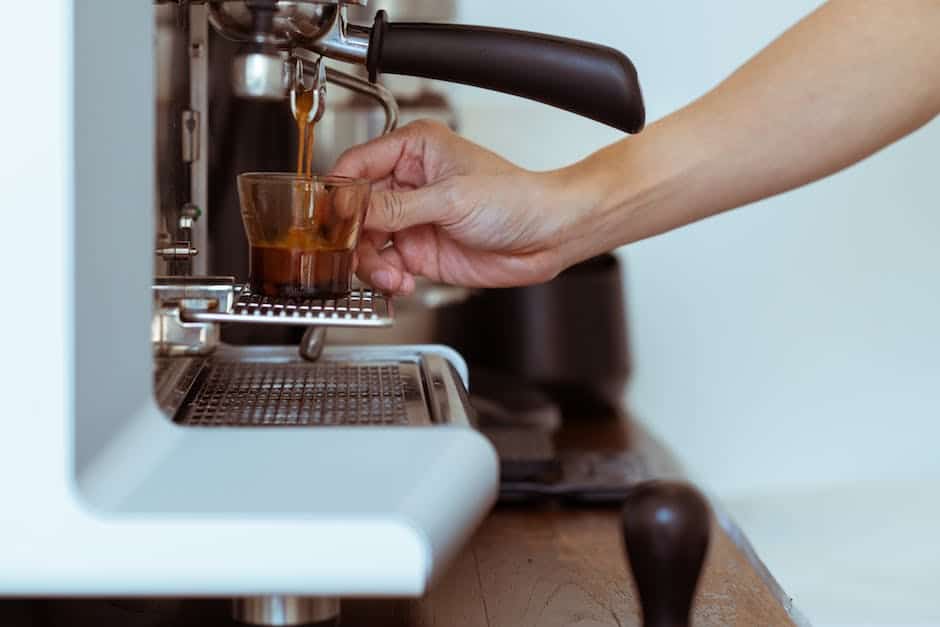
Once you have decided to make the switch to coffee, it is important to keep up with your coffee machine maintenance. If you do not maintain your coffee machine, it can lead to bad smells when brewing new drinks, or even worse, bacteria growth.
To maintain your coffee machine, you will need to clean it every once in a while. Depending on the model, this can be easy or hard.
The first thing you should do is clean out the grinds that have accumulated in the bin. Most models have a special tool for doing this, so do not try to use something else.
Then, you should wash out the tank and any other removable parts using warm water and soap. Alternatively, you can use a vinegar solution to clean your machine-it all depends on what type of brew your machine makes.
After that, dry all of the parts thoroughly so that no water remains.
Run Water Through It
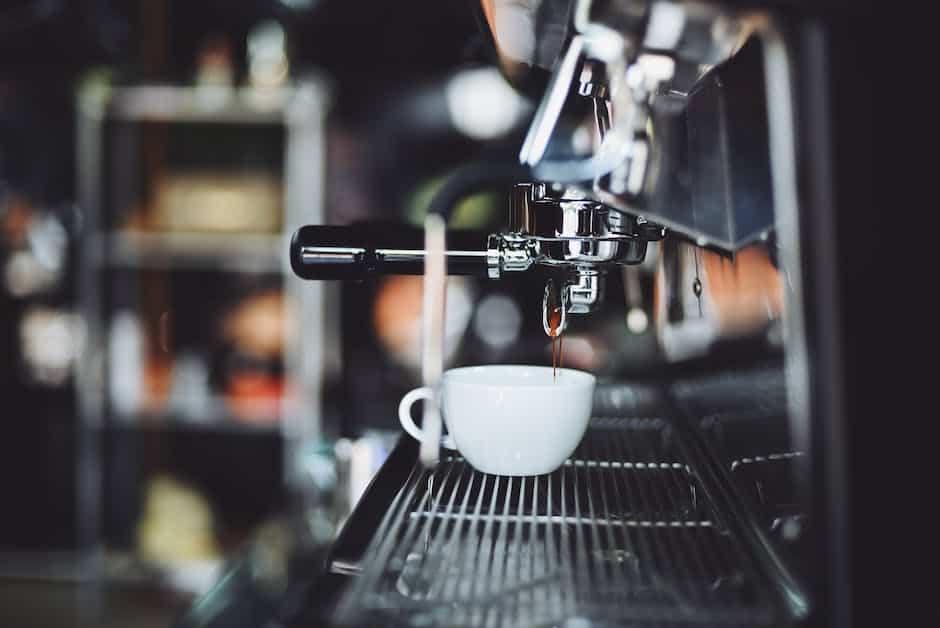
Once a week, you should run water through your coffee machine to clean out any leftover coffee residue and powder. To do this, you will need to tap into the water supply.
You will want to do this in the beginning of the week so that you have clean water for the rest of the week. It is also a good idea to do this before you go out of town for the week, so that there is no chance of your coffee being less than perfect when you return!
To clean it, first rinse out the reservoir and drip tray, then fill them with warm-to-hot water. Press the brew button and let it cycle through until it dumps out, then repeat until there is no more water coming out. Let it dry off and cool down before using again.
Use a Cleaning Solution
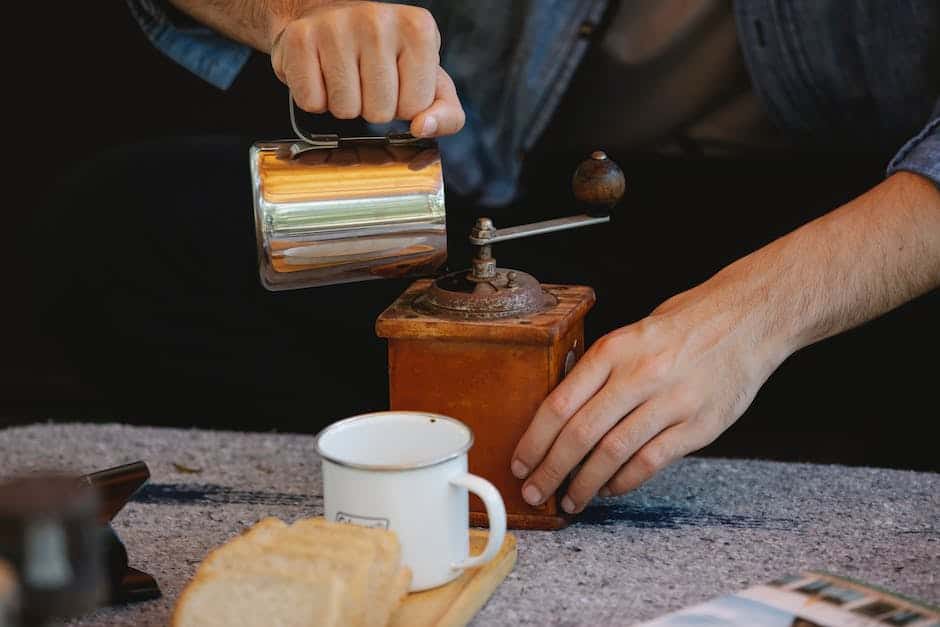
After you have wiped down your coffee machine, it is time to put it to use. The next step is to make a solution to wash your coffee machine with.
You can use warm water alone, but adding some dish soap or a special coffee machine cleaner will increase its cleaning power. These will help remove any leftover residue and grime that are stuck in the parts of the machine.
Make sure you read the instructions for your particular model on how to clean it! Some have very specific ways of cleaning them.
After you have washed it, let it dry completely before using it again.
Bring to A Repair Shop
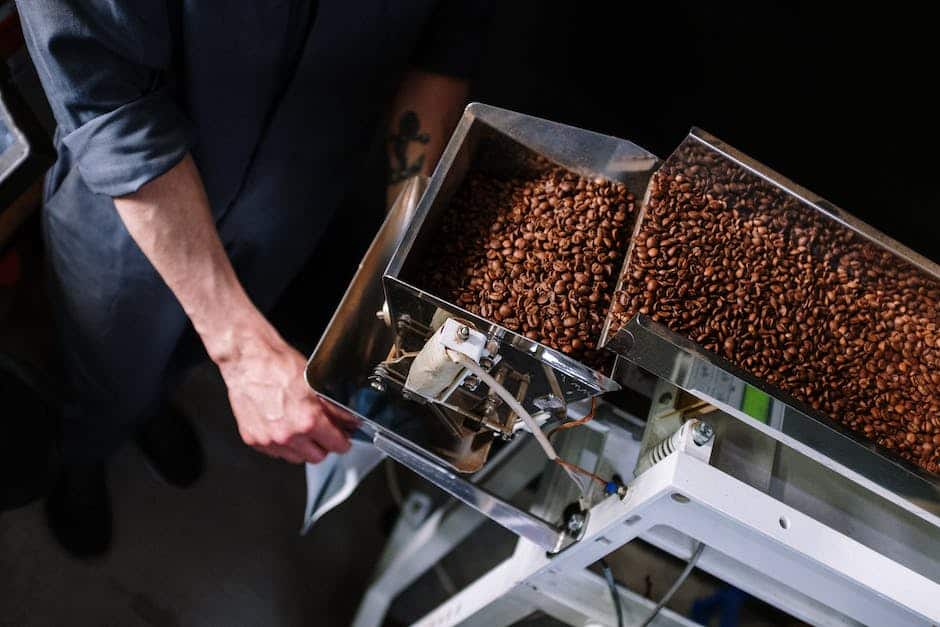
If you are not comfortable or experienced with fixing things, then the best thing to do is bring it to a professional coffee machine repair shop. There are many online and even local coffee shops that have lists of repair shops.
Many cities even have independent coffee machine repair people that you can find through search engines or word of mouth. These people are great as they love coffee and want to keep people’s machines working!
If you cannot find any listings for repair people in your area, then your best bet is to look up how to take apart your machine, find the problem, and fix it.
Most problems are simple enough that anyone with basic knowledge of taking things apart and putting them back together can do it. The hard part is determining what is wrong and how to fix it.
Have Fresh Water Available
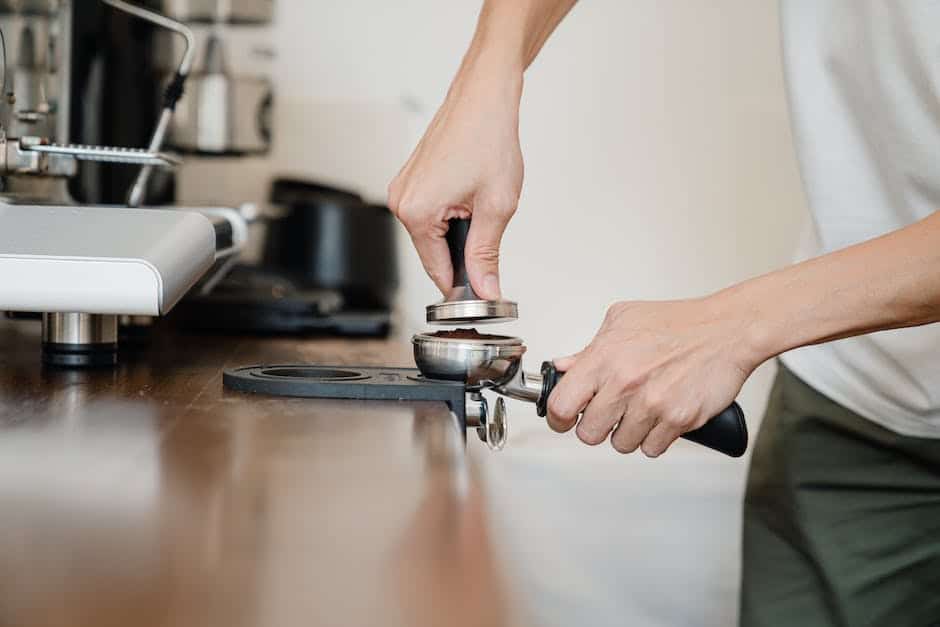
Make sure you have a constant supply of clean, warm water available to your machine. If the machine requires it, make sure to add more water whenever it runs out.
Water is needed to prime the coffee machine, prepare the brew, and clean out the system. If there is not enough water, then there will be no coffee!
Some machines require specific temperatures of water, so make sure you check for that. Most machines require warm water, though some prefer hot or even boiling water.
Making sure your machine has the essentials is an easy way to prevent some problems. If your machine does not have a reservoir for water, then getting a waterproof container is a good replacement.
Do Not Run Water Through with Coffee in It

This may seem like a no-brainer, but too many people do this! You should always make sure that you do not run water through the coffee machine with coffee in it.
Why? Because if you do this, then you must clean the machine according to instructions. And if you do not know how to clean it correctly, then you will need to replace parts due to damage.
Many people try to save time by doing this, but it can seriously damage your machine. The water will also become very bitter due to the coffee residue that was left inside.
Make sure whenever you change the coffee flavor or brand that you run clean water through the machine to avoid this issue.
Wash the Pot with Warm Water and Soap

After you have used your coffee machine, you will need to wash the pot. Most recipes call for just rinsing the pot with water, but that can lead to poor taste in the next cup of coffee.
Coffee oils can stick to the pot and brew into the next cup. These oils may also cause mold if not washed away thoroughly.
To maintain your coffee machine, you should wash the pot with warm water and soap. This will remove any leftover flavor or grease and keep your next cup tasting good!
Also, run a cycle of water through the machine to clear out any remaining residue. Doing this will also help prevent mold or mildew from growing in the machine.
Make sure to dry off and clean inside of the machine regularly to prevent buildup of moisture that may lead to mold or mildew.
Dry All Moisture Properly

Even if you wash your coffee machine right after using it, bacteria can still grow if there is moisture inside. Over time, this can cause a sour smell and flavor in your coffee.
To prevent this, make sure to dry all the internal parts properly. Run a complete cycle with only half a cup of white vinegar as water. This will help remove any residual moisture in the machine.
If you use a pod machine, be sure to check the cartridge area for moisture every time you clean it. If there is any moisture, dry it out completely before using the machine again.
Clogged filters are another source of lingering moisture. Make sure to check these and dry them out if needed!
When cleaning your coffee machine, do not use very strong chemicals. They may damage the internal workings of the machine. A simple soap and water solution is all that is needed.
Justin is a seasoned author, coffee and tea enthusiast, and an essential member of the Cappuccino Oracle team. With a keen appreciation for the complexities of coffee, coffee alternatives, and tea, Justin has dedicated his professional career to exploring these realms and sharing his insights with readers worldwide.
Justin’s immersion in the world of coffee, coffee alternatives, and tea began at a young age, kindling a passion that extended beyond mere consumption. This love for these beverages led him to combine his talent for writing with his devotion to coffee and tea, bringing him to Cappuccino Oracle as a dedicated author.
Espresso Machines
Choosing The Perfect Quick Mill Espresso Machine For Your Needs
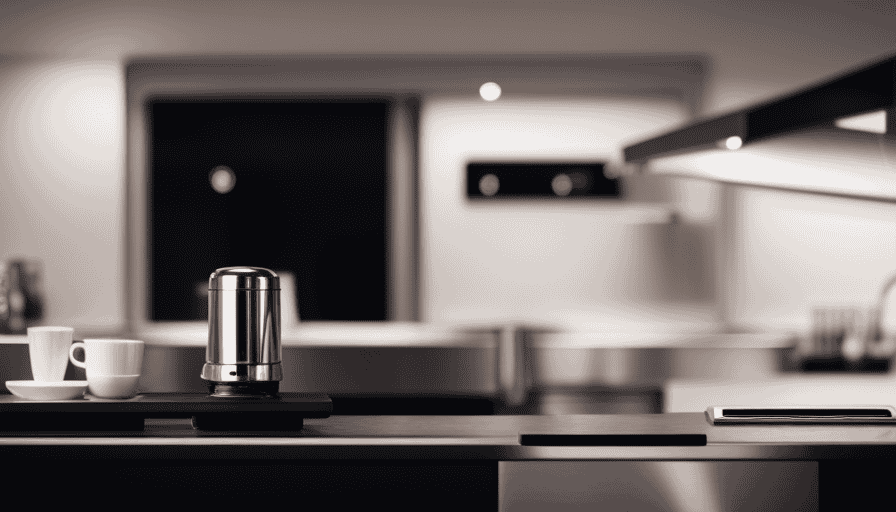
Choosing the perfect Quick Mill espresso machine is like finding the perfect dance partner – it’s all about finding one that suits your needs and moves with you effortlessly.
With a range of options to choose from, Quick Mill offers prosumer espresso machines that cater to different preferences and budgets. Whether you’re a coffee connoisseur or a budget-conscious brewer, there’s a Quick Mill machine for you.
At the top of the line is the Vetrano 2B Evo, a powerhouse with stainless steel boilers, PID temperature control, and an E61 brew group.
For those on a budget, the QM67 offers similar features with two stainless steel boilers and a vibration pump.
If steaming power is your priority, the Andreja Premium Evo with its 1.8-liter brass boiler and powerful heating element is a popular choice.
The Alexia Evo offers a single boiler with PID temperature control, while the Silvano Evo stands out with its separate vibration pump and thermoblock for dual boiler functionality.
When choosing your Quick Mill machine, consider your preferences, available space, and whether you prioritize simultaneous brewing and steaming or temperature control. Let’s dive into the features and specifications to help you make an informed decision.
Key Takeaways
- Quick Mill offers a wide range of prosumer espresso machines to choose from.
- The Vetrano 2B Evo is Quick Mill’s top-of-the-line double boiler model, while the QM67 is a more affordable option with two stainless steel boilers and a vibration pump.
- The Andreja Premium Evo is Quick Mill’s largest and most popular heat exchanger machine, while the Alexia Evo is a single boiler machine with PID temperature control.
- The Silvano Evo is a unique espresso maker with a separate vibration pump and thermoblock for dual boiler functionality, and it has a 0.4-liter coffee boiler with PID temperature control.
Types of Machines
I’ve learned that Quick Mill offers a variety of espresso machines, including double boilers, heat exchangers, and single boilers, each with their own advantages and limitations.
Different types of espresso machines cater to different needs and preferences. Single boilers are the smallest and least expensive option, but they don’t allow for simultaneous brewing and steaming.
Double boilers, on the other hand, allow for both brewing and steaming at the same time, and they offer the best temperature control.
Heat exchangers are a more affordable option than double boilers and also allow for simultaneous brewing and steaming.
Each type has its pros and cons, so it’s important to consider factors such as the types of drinks you enjoy and the available space when choosing the perfect Quick Mill espresso machine for your needs.
Features and Specifications
Consider the features and specifications of the different Quick Mill espresso machines to find the best fit for you. Here are some pros and cons to help you compare the models:
-
Vetrano 2B Evo: This top-of-the-line double boiler machine offers stainless steel boilers, PID temperature control, and an E61 brew group. Pros include excellent temperature stability and the ability to brew and steam simultaneously. However, it is quite large and expensive.
-
QM67: This scaled-down version of the Vetrano 2B Evo features two stainless steel boilers and a vibration pump. It offers great value for those who don’t need maximum steaming power. Pros include its compact size and affordability, but it lacks the temperature control of the Vetrano.
-
Andreja Premium Evo: This heat exchanger machine boasts a 1.8-liter brass boiler, an E61 brew group, and a powerful heating element. It is Quick Mill’s largest and most popular model. Pros include its large capacity and the ability to brew and steam simultaneously. However, it does not have PID temperature control.
-
Alexia Evo: This single boiler machine has PID temperature control and a commercial 58 mm E61 brew group. It is a more affordable option for those who don’t make milky drinks often. Pros include its compact size and temperature stability, but it lacks the ability to brew and steam simultaneously.
-
Silvano Evo: This unique espresso maker has a separate vibration pump and thermoblock for dual boiler functionality. It has a 0.4-liter coffee boiler with PID temperature control and adjustable thermoblock temperature. Pros include its compact size and the ability to brew and steam simultaneously. However, it has a smaller boiler capacity compared to other models.
Consider your preferences and space limitations when comparing the features and specifications of these Quick Mill espresso machines.
Considerations and Recommendations
In my opinion, it’s important to take into account your preferences and the available space when selecting the best Quick Mill espresso machine for you. When considering the options, there are a few pros and cons to keep in mind.
The Vetrano 2B Evo and QM67 are top-of-the-line models with stainless steel boilers, PID temperature control, and an E61 brew group. They offer excellent temperature stability and the ability to brew and steam simultaneously. However, they may be more expensive and may require more space due to their larger size.
If you’re on a budget or have limited space, the Andreja Premium Evo and Alexia Evo are great heat exchanger options with commercial 58 mm E61 brew groups. They provide good temperature stability and allow for simultaneous brewing and steaming.
Lastly, the Silvano Evo is a unique choice with dual boiler functionality and adjustable thermoblock temperature. It is more compact and budget-friendly, but it lacks the same steaming power as the other models.
Consider these factors to find the perfect Quick Mill espresso machine for your needs.
Frequently Asked Questions
How long is the warranty on Quick Mill espresso machines?
The warranty length on Quick Mill espresso machines varies depending on the model and the retailer. Generally, Quick Mill offers a one-year warranty on their machines, which covers any defects in materials or workmanship. Some retailers may offer extended warranties for an additional cost.
It’s important to consider the pros and cons of different warranty lengths for espresso machines. Longer warranties provide peace of mind and protection against unexpected issues, but they may come with a higher upfront cost.
To properly maintain and care for your espresso machine, it’s important to follow the manufacturer’s instructions for cleaning and descaling, and to regularly replace any worn or damaged parts.
Can Quick Mill machines be used with pods or only with ground coffee?
Quick Mill machines are designed to be used with ground coffee, not pods. While some espresso machines have the option to use pods, Quick Mill machines are specifically designed for traditional brewing methods. Using ground coffee allows for more control over the flavor and strength of your espresso. However, using pods can be more convenient and less messy. Ultimately, the decision between using pods or ground coffee in a Quick Mill machine depends on personal preference and convenience.
Are Quick Mill espresso machines compatible with water filters?
Yes, Quick Mill espresso machines are compatible with water filters. Using a water filter with your machine can provide several water quality benefits, such as reducing impurities and improving the taste of your espresso.
When comparing water filter options, consider factors like the filtration technology and filter lifespan. It’s important to choose a filter that is compatible with your specific Quick Mill model and follow the manufacturer’s instructions for installation and maintenance.
Can the temperature be adjusted on Quick Mill espresso machines?
Yes, the temperature can be adjusted on Quick Mill espresso machines, which is one of their great features. This allows you to have more control over the brewing process and achieve the perfect extraction for your espresso.
However, it’s important to note that adjusting the temperature may require some trial and error to find the optimal setting for your specific beans and desired flavor profile.
When it comes to using pods with Quick Mill machines, there are pros and cons. Pods offer convenience and easy clean-up, but they may not deliver the same level of freshness and flavor as freshly ground beans.
Are Quick Mill machines easy to clean and maintain?
Quick Mill machines are generally easy to clean and maintain. Here are some cleaning tips and maintenance practices to keep your Quick Mill espresso machine in top condition.
Regularly clean the brew group, portafilter, and steam wand to prevent any residue buildup. Backflush the machine with a cleaning solution to remove any oils and debris.
It’s also important to descale the machine periodically to remove mineral deposits. Additionally, make sure to follow the manufacturer’s instructions for maintaining the machine effectively.
Justin is a seasoned author, coffee and tea enthusiast, and an essential member of the Cappuccino Oracle team. With a keen appreciation for the complexities of coffee, coffee alternatives, and tea, Justin has dedicated his professional career to exploring these realms and sharing his insights with readers worldwide.
Justin’s immersion in the world of coffee, coffee alternatives, and tea began at a young age, kindling a passion that extended beyond mere consumption. This love for these beverages led him to combine his talent for writing with his devotion to coffee and tea, bringing him to Cappuccino Oracle as a dedicated author.
Espresso Machines
Flair Espresso Maker: A Versatile Manual Lever Espresso Machine
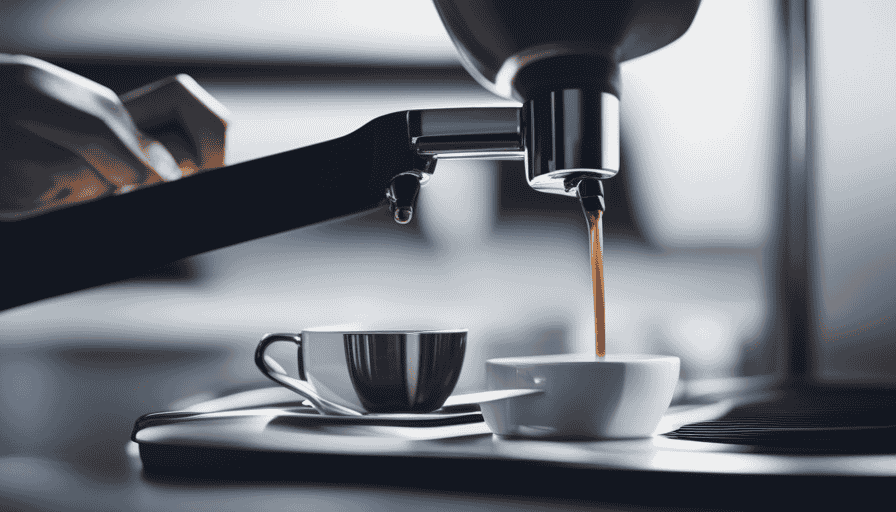
With a staggering 9 bars of pressure and the ability to control pressure profiling, the Flair Espresso Maker stands as a versatile manual lever espresso machine that guarantees exceptional espresso at an affordable price.
This article explores the various models and features of the Flair, delving into its brewing process, pros and cons, and alternative options.
The Flair Classic, Neo, Signature, and Pro 2 cater to different levels of expertise and budgets, ensuring that there is a suitable option for every espresso enthusiast.
Featuring a minimalist design and a sturdy construction, the Flair is not only portable and easy to maintain but also offers great value for money.
As an alternative to traditional lever espresso machines, the Flair Espresso Maker presents a cost-effective solution without compromising on coffee quality.
Key Takeaways
- The Flair Espresso Maker is a manual lever espresso machine that achieves 9 bars of pressure and offers full control over pressure profiling.
- It comes in four models: Classic, Neo, Signature, and Pro 2, each with its own unique features and price range.
- The Flair Espresso Maker has a minimalist design with excellent build quality, easy cleaning and maintenance, and offers great value for money.
- While it does not have a milk steaming/frothing system and has a steep learning curve, it is highly rated for its amazing espresso quality and portability.
Flair Espresso Maker
The Flair Espresso Maker is a manual lever espresso machine that offers full control over pressure profiling. It achieves 9 bars of pressure and is available in four models: Classic, Neo, Signature, and Pro 2.
One of the key features of the Flair Espresso Maker is its ability to provide pressure control in manual lever espresso machines. This allows users to experiment with flow profiling and discover new extractions.
When compared to other manual lever espresso machines, the Flair Espresso Maker stands out for its affordable prices, high build quality, and the option for full control over pressure profiling.
The Flair Espresso Maker is a cost-effective alternative to traditional lever espresso machines, making it an attractive option for coffee enthusiasts looking for a versatile and affordable espresso machine.
Models and Features
With four different models available, each offering unique features and improvements, which option best suits the needs and preferences of the espresso enthusiast? Let’s compare the Flair Neo and Flair Pro 2 to determine the best fit.
-
Flair Neo: Designed for beginners, this model is the least expensive and easiest-to-use option. It provides exceptional value for money, delivering great espresso at an affordable price. However, it lacks the pressure gauge found in the higher-end models.
-
Flair Pro 2: Considered the most advanced model, the Flair Pro 2 offers improvements in both coffee quality and machine durability. It is the go-to choice for serious espresso lovers due to its larger brewing capacity and the ability to produce a double shot.
When it comes to the best manual lever machine for the price, the Flair Espresso Maker stands out. Whether you’re a beginner or an experienced espresso enthusiast, there’s a Flair model that suits your needs.
Brewing Process
When considering the brewing process of the Flair Espresso Maker, it is worth noting that the manual control allows for experimentation with flow profiling and the discovery of new extractions. The user has complete control over the brewing techniques, allowing them to adjust variables such as grind size, water temperature, and extraction time to achieve their desired flavor profile. With the Flair Espresso Maker, extraction control is key in producing the perfect espresso shot. The manual lever operation provides the necessary pressure to extract the flavors from the coffee grounds, while the user can control the duration and intensity of the extraction process. This level of control ensures that each shot is tailored to the user’s preference, resulting in a unique and personalized espresso experience.
| Advantages | Disadvantages |
|---|---|
| Complete control over brewing techniques | Steep learning curve |
| Allows for experimentation and discovery | Requires manual operation |
| Tailored and personalized espresso shots | Requires knowledge and understanding of extraction process |
Pros and Cons
One advantage of the Flair Espresso Maker is the ability to achieve complete control over the brewing techniques, allowing for experimentation and discovery. Users have reported that this manual lever espresso machine offers a unique and enjoyable espresso experience.
The Flair Espresso Maker allows users to have full control over pressure profiling, which can result in customized extractions and flavor profiles. Additionally, the Flair Signature model includes a pressure gauge, ensuring reproducible and high-quality shots.
Another advantage is the affordable price range, making it a cost-effective alternative to traditional lever espresso machines.
However, some users have experienced a steep learning curve when using the Flair Espresso Maker, particularly in terms of achieving consistent and high yields. Furthermore, the machine does not include a milk steaming/frothing system, which requires users to purchase a separate milk frother.
Despite these limitations, the Flair Espresso Maker offers excellent espresso quality, good build quality, and easy portability.
Alternative Options
Another portable option for brewing espresso on the go is the Wacaco Minipresso. This compact and lightweight espresso maker is a popular choice among coffee enthusiasts who value portability. With its innovative design, the Minipresso allows users to enjoy a rich and flavorful espresso wherever they are. It is easy to use and does not require any electricity, making it ideal for camping trips or travel. The Minipresso also boasts a high-quality build and delivers consistent results.
Here is a table comparing the Wacaco Minipresso with other portable espresso options:
| Espresso Maker | Portability | Ease of Use | Build Quality | Price Range |
|---|---|---|---|---|
| Wacaco Minipresso | Compact and | Easy to use | High-quality | Under $100 |
| lightweight | ||||
| Nanopresso | Compact and | Easy to use | Durable | Under $100 |
| lightweight | ||||
| Picopresso | Compact and | Easy to use | Sturdy | Under $100 |
| lightweight | ||||
| AeroPress with | Compact and | Easy to use | Reliable | Under $50 |
| Fellow Prismo | lightweight |
These portable alternatives offer a simplified workflow and allow coffee lovers to enjoy a delicious cup of espresso wherever they may be. Whether it’s the Wacaco Minipresso, Nanopresso, Picopresso, or AeroPress with Fellow Prismo, these options provide a convenient and portable solution for espresso brewing on the go.
Frequently Asked Questions
What is the warranty period for the Flair Espresso Maker?
The warranty period for the Flair Espresso Maker varies depending on the model.
The Classic, Neo, and Signature models come with a 5-year warranty, while the Pro 2 model offers a 2-year warranty.
It’s important to note that the warranty only covers manufacturing defects and does not include damage caused by misuse or normal wear and tear.
Additionally, all models of the Flair Espresso Maker are compatible with pre-ground coffee, providing flexibility and convenience for users.
Can the Flair Espresso Maker be used with pre-ground coffee?
Using pre-ground coffee with the Flair Espresso Maker has both pros and cons.
One advantage is convenience, as pre-ground coffee eliminates the need for grinding beans. Additionally, it can be more cost-effective compared to purchasing whole beans.
However, there are drawbacks to using pre-ground coffee. It may not produce the same level of freshness and flavor as freshly ground beans, resulting in a less satisfying espresso experience. Furthermore, the Flair Espresso Maker is designed to work best with freshly ground coffee, so using pre-ground coffee may not fully optimize its capabilities.
Does the Flair Espresso Maker come with a tamper?
While the Flair Espresso Maker does not come with a tamper, having a good tamper is essential for making espresso. It ensures even distribution of coffee grounds and proper extraction.
Using a manual lever espresso machine like the Flair offers several advantages, including full control over pressure profiling and the ability to experiment with flow profiling. However, it also has its drawbacks, such as a steep learning curve and the lack of a milk steaming/frothing system.
How long does it take to brew a shot of espresso with the Flair Espresso Maker?
The brewing time for a shot of espresso with the Flair Espresso Maker varies depending on individual preferences and experience. On average, it can take around 1 to 2 minutes to brew a shot.
The manual lever operation allows for full control over the brewing process, including pre-infusion and pressure profiling, which can affect the brewing time.
Additionally, the Flair Espresso Maker has no maintenance requirements, making it a convenient and hassle-free option for espresso enthusiasts.
Can the Flair Espresso Maker be used to make other types of coffee drinks, like cappuccinos or lattes?
The Flair Espresso Maker, like a versatile artist’s brush, is primarily designed for creating exceptional espresso. However, it may not be the ideal tool for making non-coffee drinks such as cappuccinos or lattes, as it lacks a milk steaming/frothing system. For those seeking to indulge in these beverages, alternative options like the Wacaco Minipresso, Nanopresso, Picopresso, or AeroPress with Fellow Prismo offer more convenience.
Alternatively, simplified workflow alternatives like the Flair 58 or Cafelat Robot can provide a seamless experience.
Conclusion
In conclusion, the Flair Espresso Maker is a versatile and affordable manual lever espresso machine that offers exceptional espresso. With its range of models, from the beginner-friendly Flair Neo to the advanced Flair Pro 2, there is an option for every coffee lover.
The Flair design features a minimalist yet sturdy build, making it portable and easy to clean. With its ability to achieve 9 bars of pressure and provide full control over pressure profiling, the Flair Espresso Maker delivers high-quality shots.
With its excellent value for money, it is a cost-effective alternative to traditional lever espresso machines. As the saying goes, ‘Good things come to those who wait,’ and with the Flair Espresso Maker, the wait is worth it for a delicious cup of espresso.
Justin is a seasoned author, coffee and tea enthusiast, and an essential member of the Cappuccino Oracle team. With a keen appreciation for the complexities of coffee, coffee alternatives, and tea, Justin has dedicated his professional career to exploring these realms and sharing his insights with readers worldwide.
Justin’s immersion in the world of coffee, coffee alternatives, and tea began at a young age, kindling a passion that extended beyond mere consumption. This love for these beverages led him to combine his talent for writing with his devotion to coffee and tea, bringing him to Cappuccino Oracle as a dedicated author.
Espresso Machines
Exploring The Finest Italian Espresso Machines And More

Coincidentally, as the aroma of freshly brewed coffee fills the air, the world of Italian espresso machines unveils its finest treasures.
In this article, we embark on a journey to explore the realm of these exquisite machines, seeking to uncover the crème de la crème. From the sleek design of the DeLonghi Magnifica to the precision of the Rancilio Silvia, we delve into the features and brands that define Italian espresso excellence.
Along the way, we discover the Nuova Simonelli Oscar II, the De Longhi ECAM45760B Eletta, and the Saeco Incanto Carafe, each offering its unique blend of craftsmanship and innovation.
We also explore the different types of espresso machines available, the importance of grinding coffee beans, and the compatibility of ESE pods.
Join us as we navigate the nuances of size, volume, quality, and price to find the perfect Italian espresso machine for your brewing pleasure. Whether you prefer the rich, bold flavors of a Moka pot or the refined expertise of a real espresso, this article is your guide to the world of Italian espresso machines and more.
Key Takeaways
- Italian espresso machines such as DeLonghi Magnifica, Rancilio Silvia, Nuova Simonelli Oscar II, De Longhi ECAM45760B Eletta, and Saeco Incanto Carafe are highly regarded in the market.
- There are different types of espresso machines including Manual, Automatic, Semi-automatic, and Super-automatic, each offering different levels of control and automation.
- Italian brands dominate the espresso machine market, known for their superior quality and performance.
- Investing in a high-end espresso machine provides an enhanced brewing experience with customization options.
Types of Espresso Machines
There are various types of espresso machines available, including manual, automatic, semi-automatic, and super-automatic machines, each with their own set of features and functionalities.
Manual espresso machines offer the most control over the brewing process, allowing the user to adjust variables such as water temperature and extraction time. This can result in a more personalized and customizable espresso, but it requires a higher level of skill and expertise.
On the other hand, automatic machines automate the brewing process, making it easier for beginners or those who prefer a more convenient option.
Semi-automatic machines strike a balance between manual and automatic, allowing for manual control over certain aspects of the brewing process while automating others.
Super-automatic machines are the most convenient option, handling everything from grinding the beans to frothing the milk. However, they may lack the level of control and customization offered by manual or semi-automatic machines.
Features and Brands
Prominent features and reputable brands dominate the landscape of espresso machine offerings, akin to a constellation of innovative mechanisms and esteemed names shining brightly in the vast universe of coffee enthusiasts.
When it comes to Italian vs. American espresso machines, Italian brands are often regarded as top contenders in the market. Known for their craftsmanship and attention to detail, Italian espresso machines boast superior quality and performance.
Investing in a high-end espresso machine comes with a multitude of benefits. These machines offer greater control over the brewing process, allowing users to adjust variables such as temperature and pressure to achieve the perfect espresso shot. Additionally, high-end machines often come equipped with advanced features such as built-in grinders, dual boilers, and programmable settings, enhancing the overall brewing experience.
With a high-end Italian espresso machine, coffee lovers can truly indulge in the art of brewing and savor the rich flavors and aromas that only a quality machine can deliver.
Tips for Brewing the Perfect Espresso
To achieve optimal results when brewing espresso, it is important to follow certain tips and techniques. Here are some key tips to consider:
-
Grinding Techniques:nnThe grind size of your coffee beans plays a crucial role in the extraction process. For espresso, a fine grind is typically recommended to maximize flavor and achieve the desired level of extraction. Experiment with different grind sizes to find the perfect balance for your taste preferences.
-
Troubleshooting Common Espresso Machine Problems:nnEspresso machines can encounter various issues, but some common problems include low water pressure, inconsistent temperature, and clogged filters. Regular maintenance, such as descaling and cleaning, can help prevent these issues. Additionally, using high-quality water and ensuring proper extraction time can contribute to a better brewing experience.
Remember, brewing espresso is an art that requires practice and attention to detail. By mastering grinding techniques and troubleshooting common machine problems, you can enhance your espresso-making skills and savor the perfect cup every time.
Frequently Asked Questions
What are some common troubleshooting issues with Italian espresso machines?
Troubleshooting issues with Italian espresso machines can arise, requiring careful attention to ensure optimal performance.
One common problem is the need to descale the machine, as mineral buildup can affect the taste and functionality. Descaling involves using a descaling solution and following the manufacturer’s instructions.
Other troubleshooting tips include checking for proper water flow, ensuring the correct grind size, and verifying the pressure settings.
By addressing these issues promptly, espresso enthusiasts can continue to enjoy the rich flavors and aromas of their Italian espresso machines.
Are Italian espresso machines compatible with different types of coffee beans?
Italian espresso machines are compatible with different types of coffee beans. They allow users to explore various flavor profiles. These machines are designed to extract the best qualities from different coffee beans, resulting in a rich and aromatic cup of espresso. Whether using Arabica beans for a mild and fruity flavor or Robusta beans for a stronger and more bitter taste, Italian espresso machines provide the platform for brewing the perfect cup, showcasing the nuances of each coffee bean variety.
Can Italian espresso machines be used to make other coffee beverages, such as cappuccinos and lattes?
Italian espresso machines are versatile and capable of making a variety of coffee beverages, including cappuccinos and lattes. With their advanced features and precise brewing capabilities, these machines allow users to create rich and creamy milk froth, ideal for making latte art.
Compared to other types of coffee makers, Italian espresso machines stand out for their exceptional brewing performance and ability to deliver authentic espresso shots. Their superior build quality and attention to detail make them a favorite among coffee enthusiasts and professionals alike.
How often should I clean and maintain my Italian espresso machine?
To properly descale an Italian espresso machine and maintain its longevity, there are a few key tips to follow.
Firstly, descaling should be done regularly using a specific descaling solution or a mixture of vinegar and water. This helps remove mineral deposits that can affect the machine’s performance.
Additionally, it is important to clean the machine’s parts, such as the portafilter and steam wand, after each use.
Regularly inspecting and replacing worn-out parts, such as gaskets and seals, is also crucial for optimal functioning.
Taking these steps will ensure that your Italian espresso machine continues to deliver excellent coffee for years to come.
Are Italian espresso machines energy-efficient?
Italian espresso machines are renowned for their exquisite craftsmanship and ability to deliver a rich, flavorful cup of coffee. When it comes to energy consumption and sustainability, these machines have made significant strides in recent years.
Manufacturers have introduced innovative features such as energy-saving modes and automatic shut-off timers to reduce power consumption. Additionally, some models are designed with eco-friendly materials and incorporate efficient heating systems.
By prioritizing energy efficiency, Italian espresso machines not only provide exceptional coffee but also contribute to a more sustainable future.
Conclusion
In conclusion, Italian espresso machines offer a wide range of options for coffee enthusiasts. The top picks in 2023 include the DeLonghi Magnifica, DeLonghi Dedica, Gaggia Brera, Rancilio Silvia, and Gaggia Classic Pro. These machines boast various features such as programmable settings, steam wands, and high-quality construction.
It is important to grind coffee beans before brewing to achieve the desired flavor and aroma. Additionally, the choice between built-in and separate burr grinders, as well as the compatibility of ESE pods, should be considered.
Italian espresso machines come in different sizes, volumes, and price ranges, catering to individual preferences.
It is worth noting that Moka pots and Aeropress, while producing coffee with similar characteristics, cannot be considered true espresso.
Further research and exploration into the world of Italian espresso machines will provide a deeper understanding and appreciation for this beloved beverage.
Justin is a seasoned author, coffee and tea enthusiast, and an essential member of the Cappuccino Oracle team. With a keen appreciation for the complexities of coffee, coffee alternatives, and tea, Justin has dedicated his professional career to exploring these realms and sharing his insights with readers worldwide.
Justin’s immersion in the world of coffee, coffee alternatives, and tea began at a young age, kindling a passion that extended beyond mere consumption. This love for these beverages led him to combine his talent for writing with his devotion to coffee and tea, bringing him to Cappuccino Oracle as a dedicated author.
-

 Americano4 weeks ago
Americano4 weeks agoHow to Make Americano With Moka Pot
-

 Americano2 weeks ago
Americano2 weeks agoHow to Make Korean Iced Americano
-

 Americano4 weeks ago
Americano4 weeks agoHow to Make Iced Americano With Instant Coffee
-

 Americano4 weeks ago
Americano4 weeks agoHow to Make Americano With Bialetti
-

 Americano4 weeks ago
Americano4 weeks agoHow to Make Dutch Bros Americano
-

 Americano6 days ago
Americano6 days agoHow to Make an Iced Americano With Nespresso
-

 Americano2 weeks ago
Americano2 weeks agoHow Many Shots of Espresso for 16 Oz Americano
-

 Turmeric Tea1 week ago
Turmeric Tea1 week agoTurmeric Saffron Tea
















